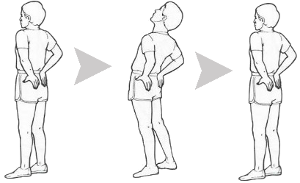Safe Lifting & Bending
in the Workplace & at Home
What is Safe Lifting
and Bending?
Often times, safe lifting emphasizes protecting the back. While that is correct and should be the main focus, an approach should be taken to be more comprehensive.
First and foremost, individuals should be aware of their lifting limit, and try to stay within it. In order to prevent injury, only lift items you are comfortable lifting – do not overexert yourself! Keep in mind that in most cases, you can ask for assistance. Why lift the whole thing when you can lift half?
Once you understand your lifting limit, the next critical component of safe lifting is protecting the back. In reality, it is the joints of the spine (rather than the muscles of the back) that require the most attention. Specific lifting techniques and strategies can be adopted to participate in lifting in a safe manner, decreasing the risk of injury. See below for a list of safe lifting and bending techniques.
Lastly, lifting and bending can also be stressful on the lower half of the body (namely, the knees). The strength, mobility, and position of the knees and feet should also be considered when lifting. Depending on the size and weight of the item you are lifting, foot placement, knee and hip alignment should be taken into consideration.
Why do I need to take such care with my spine?
The most important reason is that you only have one spine. Although medical advances and technology are advancing to the point where it is possible to support parts of the spine post-injury, it is not yet possible to replace the entire spine. So, when lifting… protect your spine – always keep it front of mind!
Another reason to take caution is due to the nature of the spinal joints. The spine itself is made up of bony structures (vertebrae) stacked on top of each other. In between each vertebra is a fluid-filled ‘disc’ that acts as a shock absorber between the bones. The fluid within these discs shifts around with every spinal movement (e.g. while bending forward or backwards, side-to-side or twisting). Compare a disc to an ice cream sandwich: when you bend forward (i.e. squeeze one side of the sandwich), the fluid material tends to push out of the other side (i.e. the back of the disc). This scenario is generally how a disc herniation occurs – the fluid is pushed out the back of the disc and may impinge on other structures such as nerves, causing pain and/or discomfort.
The likelihood of a disc injury depends on the types of movements performed in your daily life. They are more likely to occur after waking up, when the fluid hasn’t had adequate time to refill in the appropriate spaces after hours of sleeping horizontally. In addition, if tasks in your home/work life require that you bend forward repeatedly or in a sustained manner, you may also be at risk. One simple strategy that may help to reduce the risk of injury is to gently bend backwards after a long period of bending forward (e.g. after gardening).
What are Safe Lifting and Bending Strategies?
1) Bend with your knees
While this is better than bending with your back, it unfortunately doesn’t tell the whole story. Bending with the knees is definitely important, but this should also be paired with a hinge in the hip (buttocks stuck out behind you). Picture the position used to get on and off of the toilet: this is a functional and safe squatting position. To take it a step further to encourage the use of the correct muscles, think about tightening your buttocks and squeezing your inner thigh as you transition in/out of that position. In order to maintain a balance between the two, the knee should be in line with the 2nd or 3rd toe when it bends. If this is tough to coordinate in the beginning, don’t worry – it definitely takes practice!

2) The Golfer’s Lift
This technique is employed by many of the golfers in the world. Instead of bending through the back, all of the movement goes through the hip. Keep one knee locked and foot planted. Bend through the planted leg as you reach down to the ground to lift. It is important that the other leg come off of the ground so that you are not bending through the back at all. Often times, you may also use your hand to brace against a solid object to help your balance as you lower and return to standing.
3) The Lunge
Similar to the Golfer’s Lift, this technique emphasizes movement through the hip. Start with one leg in front of the other. In order to use the correct muscles, tighten the buttocks and squeeze the inner thigh (again, this takes quite a bit of practice, so don’t be discouraged!). Transition your weight forward onto the front leg, with the knee going over the 2nd or 3rd toe. This movement will bring you closer to the ground and allow you to retrieve smaller items. Save your back/spine for the bigger items that you need to lift.
If you have any questions about safe lifting or would like more information on lifting techniques, please contact us. We would be happy to support your organization’s needs through assessment or training!






